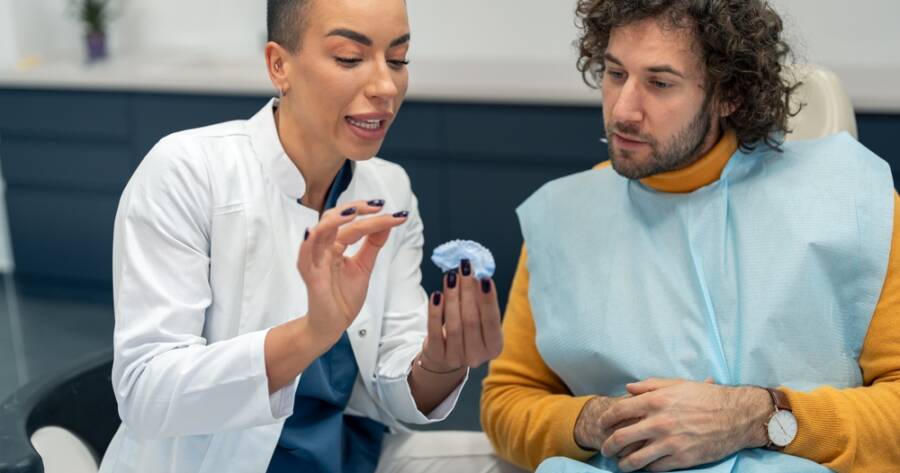Deciding between Invisalign and traditional braces for orthodontic treatment involves weighing various factors that cater specifically to individual preferences and needs. Both options present distinct aesthetic, practical, and financial benefits alongside considerations involving treatment complexity and comfort. Understanding the advantages of each can help you make an informed choice.
Invisalign vs. Braces: Which is Right for You?
The journey to achieving a perfect smile can be aided by several orthodontic solutions, with Invisalign and traditional metal braces being two of the most popular options. Each method comes with its set of benefits and considerations, making the choice between them unique to each individual’s needs and preferences.
Aesthetic Appeal and Discretion
For many individuals, especially adults and self-conscious teens, the aesthetic aspect of orthodontic treatments is paramount. Invisalign offers a nearly invisible solution, using clear plastic aligners that are difficult to detect when worn. This transparency appeals to those who wish to straighten their teeth without the noticeable metal brackets of traditional braces. Additionally, the ability to remove Invisalign trays provides more flexibility in accommodating lifestyle choices, such as special events where one might prefer not to have any dental equipment visible.
Convenience and Maintenance
One of the standout features of Invisalign is the convenience it offers. Since the aligners are removable, patients enjoy the freedom of eating without food restrictions, which are typically necessary with traditional braces. This removability also eases maintenance; regular brushing and flossing remain unhindered, promoting better oral hygiene. However, patient compliance is a significant factor with Invisalign, as not wearing the aligners for the recommended 20-22 hours a day can lead to extended treatment times or suboptimal results.
Orthodontic Complexity and Treatment Duration
While Invisalign provides many conveniences, it might not be suitable for addressing complex orthodontic issues. Traditional braces excel here, offering higher precision and control over tooth movement due to their fixed nature. They are particularly effective for severe alignment issues and can shorten the treatment duration for complex cases. This efficiency in treatment is reinforced by fewer adjustments needed for complex repositioning when compared to Invisalign.
Comfort and Health Benefits
On the comfort front, Invisalign aligners score highly as they are crafted from smooth, BPA-free plastic, minimizing the irritation that metal brackets and wires can cause. Moreover, their design contributes positively to periodontal health, reducing the risk of gum and tooth issues during the treatment process. Studies have shown that patients using aligners experience less severe root resorption and discomfort as compared to those with traditional braces.
Cost Considerations
When it comes to cost, both Invisalign and metal braces are comparable in some instances, due partly to the technological advancements included in Invisalign’s treatment approaches. While Invisalign may involve higher upfront costs, the overall expense can balance out due to fewer necessary office visits. Traditional braces, conversely, often require more frequent adjustments but may be more durable and cost-effective for longer treatment durations, particularly with dental insurance coverage often extending to them.
Professional Guidance and Consultation
A decision between Invisalign and braces should ideally be made after consulting with a seasoned orthodontist. These professionals can offer detailed insights into individual requirements, factoring in the person’s dental issues, lifestyle, budget, and aesthetic preferences. With their expertise, orthodontists can tailor a treatment plan that achieves the desired outcomes effectively and affordably.
Why You Should Learn More About Invisalign and Braces Today
Understanding the differences between Invisalign and traditional braces is crucial for anyone considering orthodontic treatment. Each option offers unique benefits that can heavily influence satisfaction with dental care and final results.
Given the impact on oral health and aesthetics, becoming informed about these options enables better decision-making tailored to personal needs and preferences. Exploring detailed information about Invisalign and braces empowers patients to engage in productive discussions with orthodontists, ensuring that their choice aligns perfectly with their dental goals and lifestyle needs.
Sources
Orthodontic Differences Between Invisalign and Braces
Comparing Invisalign and Metal Braces
Invisalign vs. Traditional Braces: 2024 Update



